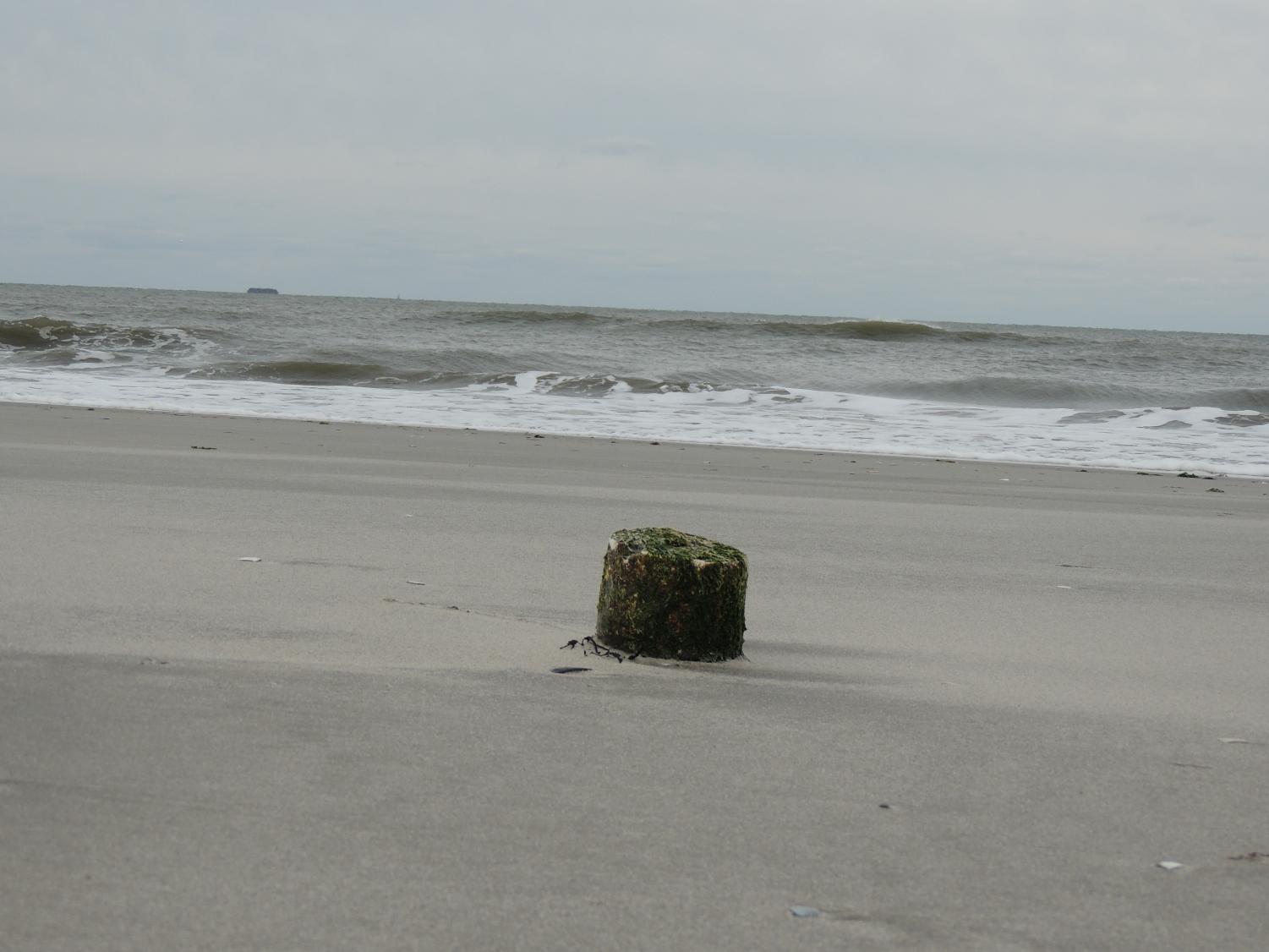When the Ocean Met the Bay in Brigantine
What two storms tell us about recovery time and the fate of shore towns.
December 22, 2021
October 29th marked the nine-year anniversary of Superstorm Sandy making landfall in my hometown, Brigantine, New Jersey. Sandy was one of the costliest natural disasters in American history. Layers of bureaucracy stretched the recovery process out to nearly a decade. Even now, we are still feeling Sandy’s devastating effects. And nothing shows how that fate could have been avoided like past superstorms.
The Great Ash Wednesday Storm
The ‘62 storm is discussed in whispers. For lack of a better term, it is the definitive superstorm, the one which every storm after is compared to. Tropical storms, hurricanes, blizzards, nor’easters—ever since I was young, the damage each and every one inflicted was compared to the storm of 1962, and none of them ever matched up. The aftermath of Superstorm Sandy was characterized in large part by the phrase, “We haven’t seen anything like this since the ‘62 storm.” This reference is not just made by those who lived through the ‘62 storm, but by their children as well, who heard tales of it like stories of monsters in their closets.
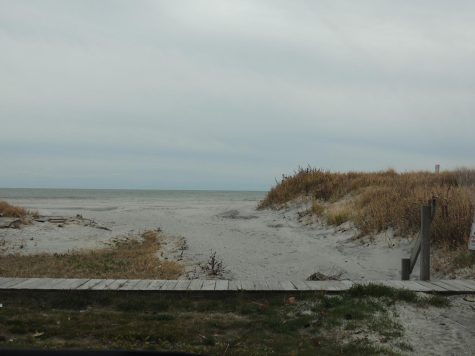
The ‘62 storm, more famously known as the Great Ash Wednesday Storm, was the most devastating natural disaster in the history of New Jersey. It pounded the state with fierce rains, howling winds, and massive floods. But the true key to the Ash Wednesday storm’s power lay in its duration. While most nor’easters move quickly, the Great Ash Wednesday Storm lingered over the state for three days. Unlike a tropical depression or hurricane, this storm had no eye, offering no relief to shore towns being battered by the wind and rain. In an article from the Press of Atlantic City, meteorologist Dan Skelton noted that so much damage was caused because of tide stacking, a phenomenon where harsh winds keep water from receding when high tide ends. The next high tide comes, the water stacks, and that creates intense flooding. In 1962, that flooding combined with constant northeast winds and rain to create a perfect storm. It had New Jersey in its grasp for three entire days and refused to let go.
Brigantine is often forgotten in reflections on the Great Ash Wednesday Storm, but its citizens certainly haven’t forgotten it. James Bennett, my father and City Manager of Brigantine, was born seven years after the storm. He laughed when I asked him about it.
“Hurricane Sandy was a fan breeze compared to what that did,” he said.
60 years on, the ghost of the Ash Wednesday storm still haunts the island. Many of the bulkheads found where the roads meet the beach only exist because of the storm’s high tides. Pictures of the storm are everywhere. They decorate the walls of our City Hall, and dozens upon dozens of them linger on in the Brigantine Beach Historical Museum. And, of course, it lives on in memory. My father can still recite his parents’ stories about the storm, and he told me how my grandmother watched from her house on 34th Street as water from the bay rushed in from one end of the street and water from the ocean rushed in on the other. “That was the first time the ocean met the bay,” my father said.
The only other time that has happened was during Superstorm Sandy.
What’s truly surprising about the Great Ash Wednesday Storm was that, for all the haunting memories it left behind, cleanup was fast. It is difficult to underestimate the devastation left behind by the Ash Wednesday storm. According to WHYY’s James Auciello, the storm killed 40 people, destroyed at least 45,000 homes in New Jersey, and caused about $200 million in property damage
(not adjusted for inflation). Auciello also notes the waves changed the immediate face of the coastline, and property damage was so severe that “federal officials considered restoring the coast to its natural state.” In other words, Brigantine faced nothing less than annihilation. Entire houses were torn to shreds, their roofs ripped off and walls torn apart. While nor’easters are a common occurrence in New Jersey, it can be difficult to reconcile the extensive damage caused by the Ash Wednesday storm with more typical mid-Atlantic storm systems.
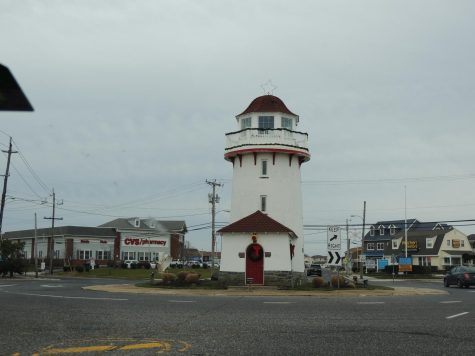
Yet reconstruction wrapped up in a few years. By the time my father was born in 1969, the town was no longer struggling with the same things it struggled with seven years after Sandy. Unlike my teenage years, my father’s childhood wasn’t filled with constant construction or haunted by families displaced from storm damage. The town had recovered. Not to imply that no ghosts lingered—there were still places that were too damaged to even attempt rebuilding, places that were only half there.
Regarding an old side-by-side up the street, my father said, “I always thought it was odd that it was sitting there by itself on the beach. Well, come to find out when I was a little bit older that there were actually three more of them that got taken down in the ‘62 storm. That one was the only one of them that survived.”
During the Great Ash Wednesday storm of 1962, Brigantine went through hell; but it rebuilt what it could from the ground up, building a stronger town upon those ashes. What it couldn’t save it left behind, rotting buildings like dark carcasses against a landscape of soft white sand, ghostly reminders of the hell the town had escaped. It knew when to cut its losses.
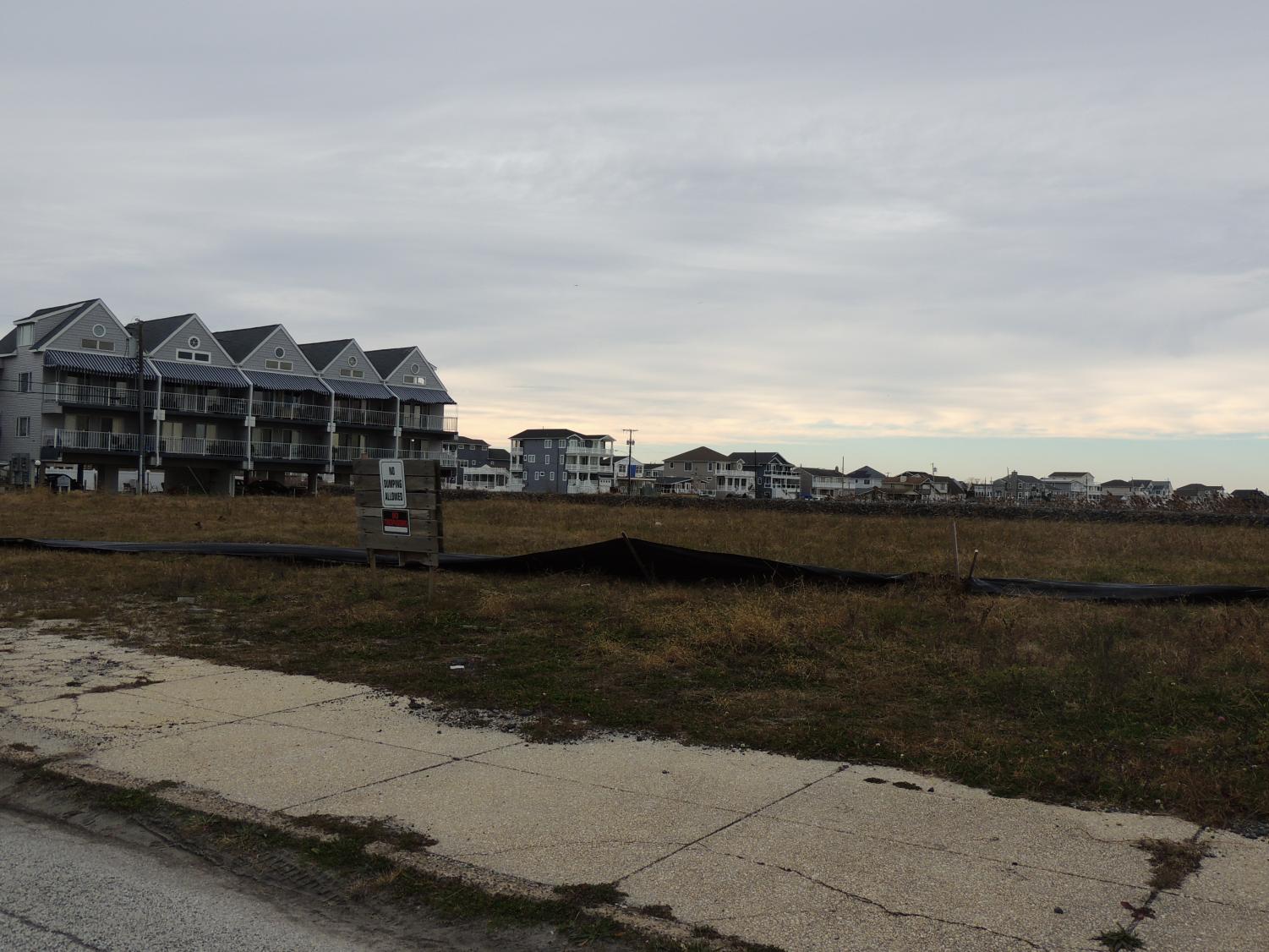
Now an empty lot, an old building once stood here prior to Superstorm Sandy knocking it down.
The Eye: 1962 vs. 2012
If the Great Ash Wednesday Storm was hell, Superstorm Sandy was purgatory. Nearly 10 years later, Brigantine is still trapped.
I was eight. The year before Sandy hit, we were warned to evacuate for Hurricane Irene. I left with my mother, and nothing happened to Brigantine. Like Sandy, Irene made landfall near Brigantine. It did cause some flooding in other parts of the State, but the milder winds and rain didn’t leave much of a mark on my town. So when warnings of Sandy came the next year, and the evacuation order with them, a third of the town turned up their noses and stayed. My mother and I didn’t stay, but my father did; as head of Emergency Management at the time, he had to.
“It was probably the scariest night I can ever remember,” my father, a military veteran, said of the night Sandy hit. He slept in his office in City Hall on his air mattress with nothing but a Mylar blanket to keep him warm as 80 mile-per-hour winds howled outside. On Sunday, for the first time since 1962, he and the other police officers watched as the ocean met the bay on 15th street. He couldn’t reach our house for four days. When he finally did, the electricity was still down. There was no light pollution from Atlantic City–he could see the stars brighter than ever. In the end, he admitted, “the storm itself was rough–it was afterwards that was even harder, more difficult to deal with.”
I spent the years after Sandy watching houses being lifted at a painfully slow pace, meaning they were being raised off the ground and put on stilts. You can’t live in a house while it’s being lifted. For about three years, one of my friends and her parents had to live with their relatives in a tiny house near the Wawa at the center of the island because their house was under construction.
At the time, I figured that the scope of the disaster was why lifting took so long; but it became more apparent over time that really it was the bureaucracy. My grandparents’ house was damaged enough that they had to stay in Florida for a whole year entirely because their insurance company refused to let them pull down the insulation that had been soaked during the storm until the adjuster came. The adjuster didn’t come for two weeks. By then, the moisture had sunk into the walls.
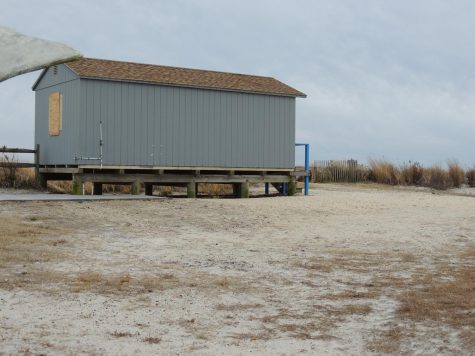
When I first came home to a ruined town, Brigantine had that strange sense of optimism and unity about it that comes after most disasters: the feeling that if we all bound together, we could overcome anything. That, however, was quickly replaced by resignation. The process of lifting a house took months on its own, not to mention the months it took to properly secure funding–and rarely was the process even that simple. In “Post-Sandy, the toll of rebuilding in Brigantine” reporter Amy Rosenberg writes about a family who faced puzzling requirements from the state to secure a grant for lifting their house, like painting a bedroom. Such stories were not uncommon. Days stretched into weeks, into months, into years, and Brigantine remained under construction, a work in progress. A purgatory.
“And it’s still going on, believe it or not–here we are, almost 10 years later, and there’s still claims out there,” said my father. “We still have probably close to $300,000 that have yet to be fully processed.” A friend of his has only now just managed to lift and sell her house.
What’s truly disconcerting about the recovery from Sandy is how it compares to that of the Ash Wednesday storm. My father was baffled by how fast the recovery was in ‘62 compared to 2012.
“The pictures I’ve seen at work, in the museum, talking to my parents, talking to my grandparents when I was a kid, it was unbelievable what happened to the island and how they were able to recover and get it back–I don’t want to say quickly, because it didn’t happen fast–but a lot quicker than we did after Sandy.”
Sandy could never compare to the devastation the ‘62 storm caused, but the hell that storm brought was almost an act of mercy. Put bluntly: In 1962, there was no call for inspections and remodelings of homes that had been completely flattened. Even the houses that did remain standing faced significantly less of a challenge dealing with insurance companies than those who faced the same fate after Sandy.
“I don’t think there were the same layers of bureaucracy–I know there weren’t the same layers of bureaucracy we have today,” said my father.
This combination of slow response times by insurance companies and the layers of bureaucracy guised as efficiency turned a storm that was significantly less damaging than the Ash Wednesday storm into one of the costliest disasters in American history.
What’s Next for Brigantine?
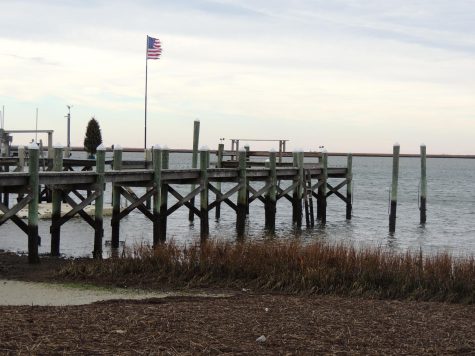
Storms like the Great Ash Wednesday Storm and Superstorm Sandy will happen again. The warming climate means that storms are becoming more and more disastrous. An article in The Washington Post found that the chance of a tropical storm becoming a Category 3+ hurricane has been growing 8% every 10 years. Future storms reaching the caliber of the Ash Wednesday Storm or Sandy are all but inevitable. And if the messy aftermath of Sandy was any indication, such storms will wreak havoc.
It should frighten the people of New Jersey–of any coastal state, really–that a storm that nearly annihilated a town had a quicker, cheaper recovery than Sandy, where the worst damages were mostly from flooding. Why are the only options losing your home entirely or being forced into a costly bureaucratic limbo? My family and I were one of the very, very lucky few to escape Sandy mostly unscathed, but ever since Sandy, I’ve had a sense of intense dread every time a hurricane forms in the Atlantic. Eventually, I sense, we will not be so lucky.
After the Great Ash Wednesday Storm, Brigantine found itself surrounded by new bulkheads to mitigate storm damage; and likewise, after Sandy, the city invested in dredging and raising houses. Experts encouraged changing the height houses sit at because they knew that water was coming, but could do nothing else to stop it–not a solution, but a surrender to the ocean. Local actions can’t change state and federal roadblocks. If Brigantine had to spend nearly a decade rebuilding from just a tropical storm, the future looks disastrous.
Storms are intensifying in both their ferocity and their frequency. Brigantine and all other towns like it will never keep up unless storm response can make its way into the national conversation and stay there. More funding needs to be directed to hurricane relief and response, and the speed of these responses needs to be greatly increased. Otherwise, Brigantine’s future is yet another decade spent in purgatory.
